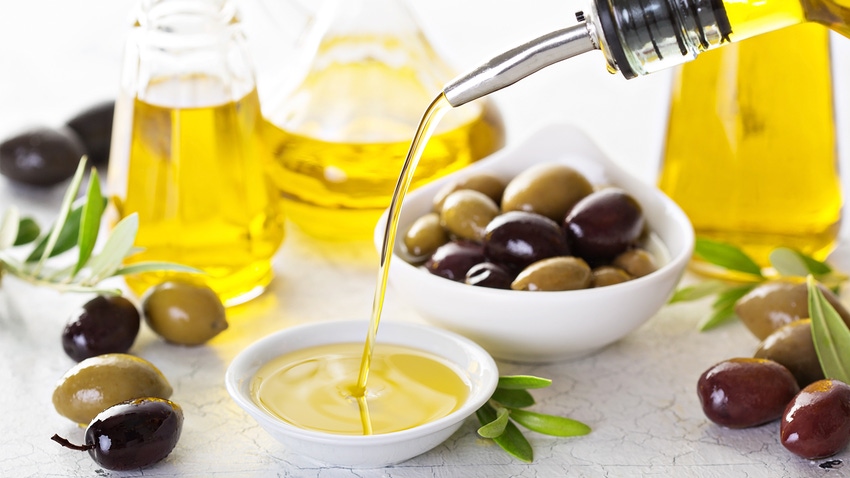California EVOO can benefit food formulators, CPGs
With stringent growing and farming practices, California EVOO has a distinct texture and taste, offering food formulators and CPGs a high-quality option for new products.

At a Glance
- Compared to other olive oils, California EVOO boasts stricter quality standards and health benefits proven by research.
- California closely regulates what is considered EVOO, protecting against food fraud like adulteration.
- EVOO is the highest grade of olive oil, as it has passed both chemical and sensory analyses.
As formulators strive to add a healthy edge to their upscale food products, a dose of California extra-virgin olive oil (EVOO) is worth consideration in certain applications. Consumers recognize EVOO as a high-quality oil that conveys health benefits, in part because it is popularized as a key component of the Mediterranean diet.
Numerous studies substantiate its disease-preventing properties and support of cardiovascular health. Research has shown higher olive oil intake has been linked to lower risk of coronary heart disease and cardiovascular disease. Scientists who studied a large pool of men and women over 28 years old in a separate study found “replacing margarine, butter, mayonnaise and dairy fat with olive oil was associated with lower risk of mortality.”
Prices of olive oil from Spain, Greece and Italy are up 75% since January 2021, according to the European Commission. If cost is a primary driver, lower grades of olive oil are available to incorporate into products, though all except EVOO are refined so they don’t have the full array of antioxidants, flavor and aroma. While California EVOO is typically on the higher side of price compared to other olive oil products, Todd Sanders, executive director of California Olive Oil Council (COOC), explained why.
“First, California has some of the strictest growing and farming practices in the world,” he said. “Farming and milling EVOO is no exception. Secondly, when consumers purchase EVOO that has the seal from the COOC, they are guaranteed that the oil has gone through the most stringent chemical and sensory analysis. Additionally, the State of California regulates what can be considered EVOO. To label EVOO in California, the oil must pass these tests. EVOO that is imported or produced outside of California does not have any or is required to adhere to any regulations.”
To produce olive oil, freshly washed olives are crushed and then malaxed, a process of slow and continuous churning under controlled temperatures to help release oil droplets from the fruit. “The oil is then separated from solid matter and water using centrifugal force,” Sanders explained. “What’s left is freshly squeezed olive oil.”
Olives may be milled mechanically, but they can never be subjected to chemicals or extreme heat to pass the EVOO grade. “The oil’s chemistry, tested in a laboratory, must meet or exceed specific parameters that indicate the careful handling and storage of the olives and oil,” Sanders said. “‘Extra Virgin’ also denotes that the oil has fruitiness and is free of defects of flavor or odor. This is evaluated by a trained sensory panel and cannot be detected by chemical tests. EVOO is the preferred product because it is the highest grade, meaning it has passed both chemical and sensory analysis.”
The COOC seal ensures that the EVVO meets grade standards. This is important because EVOO is a common victim of food fraud. Marketing virgin olive oil (VOO) as EVOO is economically advantageous, so adulterating the oil with other vegetable oils is prevalent. New methods to screen EVOO for other ingredients continue to evolve. Of particular concern, according to scientific research, is the addition of hazelnut or almond oils to EVOO because of their high allergenic potential.
The choice to use EVOO in food formulations is determined by multiple considerations. EVOO has a smoke point of about 400 degrees Fahrenheit. “Storing EVOO away from light, air and heat is essential,” Saunders explained. “These elements accelerate the process of oxidation, which leads to rancidity. As oxidation occurs naturally over time, once a bottle has been opened, it is best to use the oil within 3-6 months. EVOO should be packaged in dark glass, tin or bag-in-box to cut down on light exposure.
“With the minimal processing, it is best to think of EVOO as essentially a fruit juice,” he continued. “You wouldn’t leave orange juice sitting outside of the refrigerator for extended periods of time because it would spoil. EVOO needs to be treated with the same thought that storage is key to quality. ”
In addition to the health benefits that help drive consumers’ desire for EVOO, California EVOO is sustainable. COOC’s True Healthy Olive Cultivar project is focused on the crops’ carbon footprint. The council’s website points out that olive trees fix carbon dioxide in the soil. “If we take all the land used to grow olive trees in the world, it can store the equivalent of CO2 produced by a city of 7 million people,” Rachelle Bross, Ph.D., RDN, said in a post on the COOC website. “Another way to think about the environmental health benefits of EVOO is that for every liter of EVOO produced, olive trees remove 10 kg of CO2 from the atmosphere.”
Cost may be the most important element of the decision-making process; however, the label presence of EVOO can characterize an ordinary product as premium if the overall taste, texture, appearance and packaging of the product align. Interestingly, a recent study published in Olive Oil Times found that six in 10 Americans are buying less premium or luxury food. Importers and producers, however, reported no drop in olive oil sales.
About the Author(s)
You May Also Like






